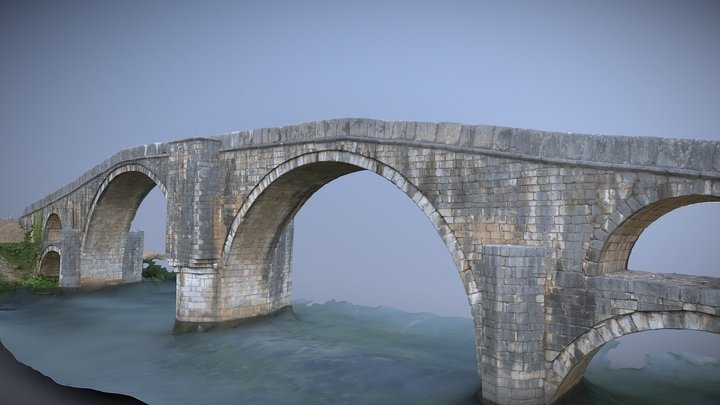Yoga Asana: Bridge or Setu Bandha Sarvangasana
Each posture in the physical yoga practice has a Sanskrit name ending in asana. Asana means seat or posture. Today we will explore Setu Bandha Sarvangasana also known as bridge pose. When we break down the Sanskrit we see: Setu which = bridge, Bandha which = lock , Sarva which = all, Anga which = limb, and asana which = seat or posture. An English translation of: a bridge that binds all the limbs. The pose appears as "Kāmapīṭhāsana" in the 19th century Sritattvanidhi (written before 1868). This posture has the potential to be active and strengthening as well as passive and restorative depending upon the intention and set up. This posture resembles a bridge and is most traditionally practiced as a beginning back bend, inversion, and heart opener.
This brings us to the why behind Setu Bandha Sarvangasana or bridge pose. Each posture has potential benefits that are of course physical in nature, both internally and externally, and also mentally, emotionally, and spiritually, yet it is important to note that not all of these are true for everyone and are also dependent upon the time, consistency, and sincerity of practice. This posture has the potential to strengthen the entire back body, improve spine alignment & flexibility, open the heart & chest promoting lung function and circulation, stretch the belly & hip flexors aiding in digestion, menstrual & menopause symptoms, as well as increase energy levels.
Setu Bandha Sarvangasana also holds symbolic, metaphoric, and meaningful significance to our own personal why’s. A bridge may hold some personal significance for you or you might be inspired by the Indian epic from the Ramayana that it is said bridge pose derived its significance from. In this story Queen Sita is captured by the evil King Ravana where he holds her in captivity on the island of Lanka. King Rama, the beloved of Sita, employs his devotee Hanuman (the monkey god) to lead the rescue party for Sita. Unfortunately Hanumans army of animals cannot fly so they plot to build a bridge from India’s southern tip to Lanka. They collected stones and boulders but were dismayed when all of the rocks sank to the bottom of the sea. Distraught, Hanuman, sat on the shore and began to spell out Rama’s name in the sand and on the rocks. Rama was Hanuman’s real life God and he was so in love and enamored with him that he would write and speak Rama’s name incessantly, so much so, that it is said, Rama’s name was inscribed upon his heart. The army of animals discovered that when they used a rock with Rama’s name inscribed on it, the rock became buoyant. This miracle could be solely ascribed to the immeasurable power equated to the deep and sincere love of Hanuman to Rama. Hanuman and his animal army built a bridge enforced by devotion across the sea to Lanka of which they marched across to rescue Queen Sita. The allegory shows us Sita as the mind, Rama as the soul, and Ravana as the ego. The mind and soul are separated by a sea of ego and only the power of love and devotion to God can bridge the separation and gloriously re-unite the two destined lovers. Perhaps the imagery of the tale can offer you the encouragement to bridge your mind and heart with devotion. Wether that devotion be to God or nature or love or kindness or service. What word will you choose to recite over and over and over again? What word will guide you in times of despair when it seems as if everything around you is sinking? Your yoga practice is your bridge, it is the observance of your Sita, Rama, and Ravana. It is the opportunity to call on Hanuman and intentionally build the daily bridge required to bond together all of our necessary parts to one united dream team.
How to do Setu Bandha Sarvangasana:
Lie down on your back, bend your knees, place your heels under or slightly forward of your knees and bring the arms down next to the sides of your body. Ground into your feet, lift your hips, lower back, middle back, and upper back. Widen your collar bones, draw your shoulder blades down and towards the midline, expand through the heart and chest. Elongate your tailbone towards your knees, press your knees forward and energetically draw your heels towards your bum. Spiral your inner thighs down and explore flexing and relaxing the glutes. If accessible, walk your shoulder underneath yourself towards the midline and clasp hands, press the pinky side of the hands down into the mat.
Modifications for Supported Bridge
1. Place a block on your chosen level underneath your sacrum.
2. Place a bolster longways to support the length of the spine, option to prop the head and neck
3. Place a block in-between the knees (can be done in traditional bridge as a strengthening component, a strap would also work for this purpose.
Bridge Variations
Rolling bridge: lift and lower, placing emphasis on the articulation of the spine, option to add arms
One leg bridge (eka pada Setu sarvangasana) same instructions as tradition bridge, draw one knee slowly towards the chest, extend the leg, keep the hips level.
Figure four bridge: cross one ankle over the opposite knee to create a figure four and flex the foot, lift into bridge following the traditional bridge instructions
***Permission to modify in anyway that provides you with a feeling of safety & ease
Useful Props:
Blocks, bolster, blankets, strap
Thank you so much Dear Reader,
How can bridge pose, pose an opportunity for you to bridge a gap in your life? Make your practice matter by making the postures more than just shapes. Shape your practice with contemplation and intention.
All my Love,
Andrea Dawn

